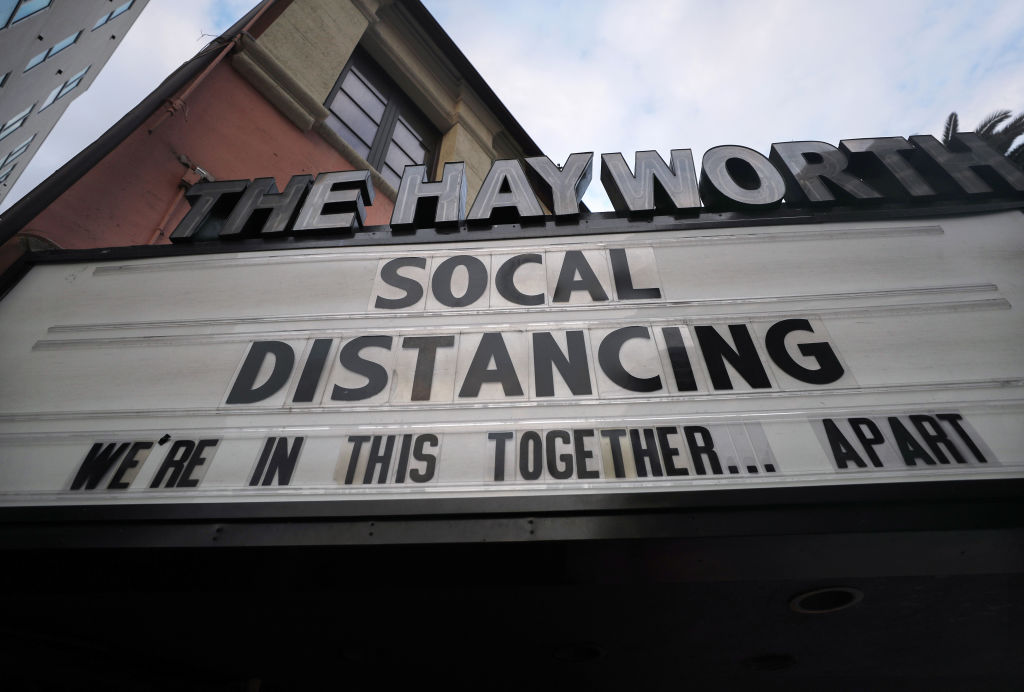
In an interview with the TODAY Show on Tuesday, Dr. Deborah Birx, the White House coronavirus response coordinator, said Americans likely won’t see the effects of social distancing for seven to 14 days. Social distancing, or deliberately avoiding contact with other people, has been a crucial part of the government’s effort to stem the spread of COVID-19, the disease caused by novel coronavirus.
Tuesday morning, TODAY Show host Savannah Guthrie asked Birx about Surgeon General Jerome Adams’s comment on on Monday that “this week, it’s going to get bad.”
“Do you agree, and in what way, what should people expect?” Guthrie asked.
“What we’re seeing in the hospitals now are people who most likely got exposed and sick more than 2 weeks ago. So you’re seeing what was occurring two and three weeks ago,” Birx responded. “The things we have put in place over the last eight days and what the Mayor and Governor [of New York have] done over the last seven days, you won’t see the impact of that for at least another seven or 14 days.” She stressed that it’s not always best to look at hospital rates to determine whether efforts are having an impact epidemiologically.
Over the past week, schools, businesses and religious centers across the U.S. have closed in an attempt to slow the spread of the virus. The White House issued guidelines last week to work from home, avoid social gatherings of more than 10 people and avoid travel. As of Tuesday morning ET, the U.S. has at least 47,175 cases, at least 23,230 of which are in New York state, according to a tracker by Johns Hopkins University. New York Governor Andrew Cuomo and New York City Mayor Bill de Blasio have taken drastic steps to try to contain the virus; on Friday Cuomo announced that 100% of New York’s workforce must stay home, excluding all “essential businesses.”
Birx also confirmed to Guthrie that if Americans do not continue social distancing in order to “flatten the curve,” there’s a possibility of two million people in the United States dying from COVID-19. “Flattening the curve” refers to taking protective measures — like social distancing — to slow the spread of the disease and not overwhelm the U.S. healthcare system.
Guthrie asked, “You have to continue to have this social distancing, right? I’ve seen one estimate that says if you don’t flatten the curve, we could have two million deaths.”
“This is absolutely correct,” Birx responded. “And that’s why the President and the Vice President yesterday kept coming back to what we need to be doing right now,” she continued, referring to a coronavirus task force press briefing held on Monday. “Please… continue to follow the guidelines of social distancing and all of the other things about knowing where your hands are and washing your hands.”
However, President Trump recently signaled that he may roll back social distancing in an attempt to revitalize the economy, which has plummeted over the past few weeks as millions of businesses have stayed closed. On, Monday the President tweeted, “WE CANNOT LET THE CURE BE WORSE THAN THE PROBLEM ITSELF. AT THE END OF THE 15 DAY PERIOD, WE WILL MAKE A DECISION AS TO WHICH WAY WE WANT TO GO!”
As TIME reports, many public health experts warn that ending social distancing this soon could have a calamitous impact on the country’s health as the virus continues to spread.
During a press conference on Monday, President Trump also signaled that he may ease back social distancing guidelines in “weeks, not months.”
“Is that advisable?” Guthrie asked Birx on Tuesday. Birx responded that officials are watching other countries closely, specifically Italy, as they reach the two week mark of social distancing. “We are seeing the number of the deaths starting to decline,” she said.
When pushed about the President’s comments, and other critiques about the impact social distancing will have on the economy, Birx responded, “I think we’re factoring all of those elements in. And there’s a fine line and a place to go that balances the needs of the American people both today and tomorrow with the reality of the epidemic.” She added that the government is collecting “granular data” to help make decisions going forward.
But she stressed that the President’s comments referred to “what we can do in the future, not looking to change what we’re doing now.”
“This is my plea to every American: Please continue to follow the presidential guidelines,” Birx said.
More Must-Reads from TIME
- Introducing the 2024 TIME100 Next
- The Reinvention of J.D. Vance
- How to Survive Election Season Without Losing Your Mind
- Welcome to the Golden Age of Scams
- Did the Pandemic Break Our Brains?
- The Many Lives of Jack Antonoff
- 33 True Crime Documentaries That Shaped the Genre
- Why Gut Health Issues Are More Common in Women
Write to Madeleine Carlisle at madeleine.carlisle@time.com